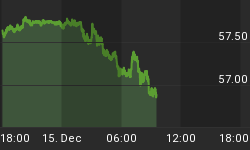The vast majority of Americans, including most investors, fail to grasp how far the economy is currently operating below historic norms. This year, for example, approximately 600,000 new housing units will be constructed compared to a 20 year norm prior to the recession of 1.5 million annually. Another indicator of the current economic doldrums is auto sales. Here are auto sales over the past 12 years:
| US VEHICLE SALES (THOUSANDS) | |
| 1998 | 15,534 |
| 1999 | 16,879 |
| 2000 | 17,344 |
| 2001 | 17,118 |
| 2002 | 16,810 |
| 2003 | 16,643 |
| 2004 | 16,866 |
| 2005 | 16,948 |
| 2006 | 16,504 |
| 2007 | 17,129 |
| 2008 | 14,131 |
| 2009 | 10,432 |
| [Source: Autodata. The figures include sales of passenger cars and light trucks for personal use.] | |
A few preliminary observations will put this data in context:
-
For auto sales to recover to the 17 million level of the decade prior to the recent recession, they will need to increase 63 percent from the 2009 low of 10.4 million sales.
-
Sales following the recent recession fell from a peak of 17.1 million in 2007 to a trough of 10.4 million in 2009, a loss of 6.7 million sales.
-
By contrast, sales following the dot com recession fell by only 700,000, from a 17.3 million peak in 2000 to a 16.6 million low in 2003.
Most analysts predict that sales for 2010 will come in between 11.5 and 11.8 million units, still far below pre-recession levels. Nonetheless, the recovery in automobile production and sales has been regarded as one of the bright spots in the economy this year. It has been a major contributor to the growth in manufacturing and related employment. Some argue that auto production has been the major contributor to manufacturing resurgence.
Yet only approximately 11.5 million vehicles will be sold in 2010 compared to the long term norm of 17 million. This is a dramatic shortfall. The media tells the American public that the economy is no longer in recession because in the past few quarters the Gross Domestic Product has grown positively. Media discussions about a possible “double dip†assume that the economy has recovered from the recession. However, the National Bureau of Economic Research, the official arbiter of when recessions begin and end, has yet to declare that this recession over, and rightly so given the low levels at which the economy is operating.
According to consumer reports, on average a new car is replaced every eight years. As vehicles age, their maintenance costs go up, increasing the incentive to purchase a replacement. But for auto sales to resume their prior sales and replacement levels, there is a good bit of catching up to do. The shortfall in 2008 from the 17 million level was 2.9 million. The shortfall in 2009 was 6.7 million below the norm. Assuming sales of 11.5 million in 2010, that will be an additional shortfall of 5.5 million, for a total shortfall over the three years of approximately 15 million units, considerably more than the entire anticipated sales for the current year.
The above data raises a number of key questions: In order for the Federal Reserve’s growth predictions to be achieved, auto sales most likely will need to grow by more than 1 million units a year in each of the next two years. How likely is that to occur? In the next five years, will auto sales climb back to their 17 million pre-recession level and, if so, how soon? Or will automobile sales settle into a new and lower normal, say in the 13 or 14 million range, consistent with a prediction of slower overall growth going forward?
Among the factors that will determine the answers to the above questions, there is increasing evidence that many consumers will defer purchases in order to help build up retirement savings. A major determinant will be the availability of credit for cars loans. A July report from Kelley Blue Book indicates that only 20 percent of new car purchases in the coming year will be for cash. The remainder of purchasers will either obtain a car loan or a lease, both of which require an acceptable credit score.
Recent reports indicate that to qualify for a conventional auto loan, borrowers need a minimum credit score of between 620 and 640. Based on a credit score analysis of all credit accounts by Fair Issacs (FICO) issued last month, 30 to 35 percent of potential borrowers now fall under that minimum score. Many borrowers overextended themselves during the housing boom years and default rates soared in the recession that followed. Borrowers defaulted in record numbers on credit cards, home equity and car loans. In most cases, repairing those credit records will take years. Further, at the same time the number of qualified buyers has fallen, lenders have tightened their credit requirements from an acceptable prerecession score of 600 to 620/640 at present, thereby cutting out even more potential borrowers. In addition, the availability of subprime auto loans as an alternative for those excluded from conventional loans has been severely restricted due to large number of subprime defaults during the recession.
The bottom line is that while car sales will pick up as buyers replace aging vehicles, a return to the 17 million level is unlikely to occur for several years.
















